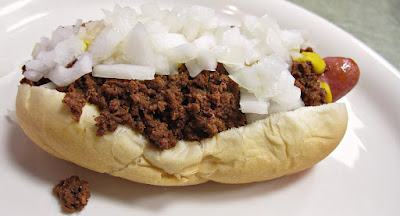There are two problems that the majority of people have with cooking and serving beef. They are fat content and sourcing. Market beef tends to be fatty, which adds to the expense. It also tends to trigger less than positive reactions when it comes to how meat makes its way to market. A fantastically tasteful and healthful solution is bison meat.
Bison Aren't Only Found In Wildlife Preserves
Yes, that's right! The mysterious native North American bovine is becoming more and more popular in your favorite supermarket. Though the price per pound is a little higher than what most bargain shoppers are used to, the benefits of using this wonderful meat in recipes far outweighs budgetary concerns.
Any processed meat containing beef products that is sold in stores, likely has an array of byproducts added to make the product profitable for producers. These byproducts and additives include grains like corn and soy, waste meats, and copious amounts of fat. Typical beef burger is an 80/20 mixture of meat and fat. This means at least 20 percent of what you buy will eventually be cooked away.
Though some beef purchased in stores is classified as extra lean, the meat itself can have questionable origins. Market cattle are raised on GMO grains, are regularly exposed to chemicals, and come from unnamed international sources. This doesn't mean that all beef purchased in supermarkets is unhealthy. It just means that there are far better sources for red meat available.
The Bison Meat Difference
Bison meat is growing in popularity because it has wonderful food properties. The meat is extremely lean and flavorful, which means it doesn't need to be mixed with bovine fats to work well in recipes. Market bison are also raised on farms that promote natural life cycles through untainted feeds, grass feeding, low stress environments, and natural breeding procedures. For anyone worried about ethical considerations when it comes to their meat sources, bison farming techniques are some of the purest and most humane in the world.
Bison Meat Versatility
When it comes to cooking bison meat, there is little to adjust in recipes for weight and volume. Bison is regularly packaged without added fats, fillers, nitrites, and colors. It is a “get what you see” meat. Bison meat also shrinks very little during cooking, so it is preferred in dishes where presentation is important.
Bison is now being used to make seasonal favorites. As an example, bison hotdogs are taking the market by storm. Normally, beef hotdogs represent an exercise in eating something unhealthy because the dogs are full of fillers, fats, and meat from unidentified sources. Bison dogs are pure meat, do not change volumes when cooking, and have vetted origins like any other select cut. As a result, bison dogs are more appetizing, more appropriate as meal centerpieces, and truer to the original intent of a great hotdog. That intent is great meat in a convenient package.
Instead of serving guests low quality dogs this summer, try lighting their taste buds with an authentic red meat that is free of everything unwanted in a diet. Bison meat hotdogs are easy to prepare, have a vibrant taste, and are made with great care.

No comments:
Post a Comment